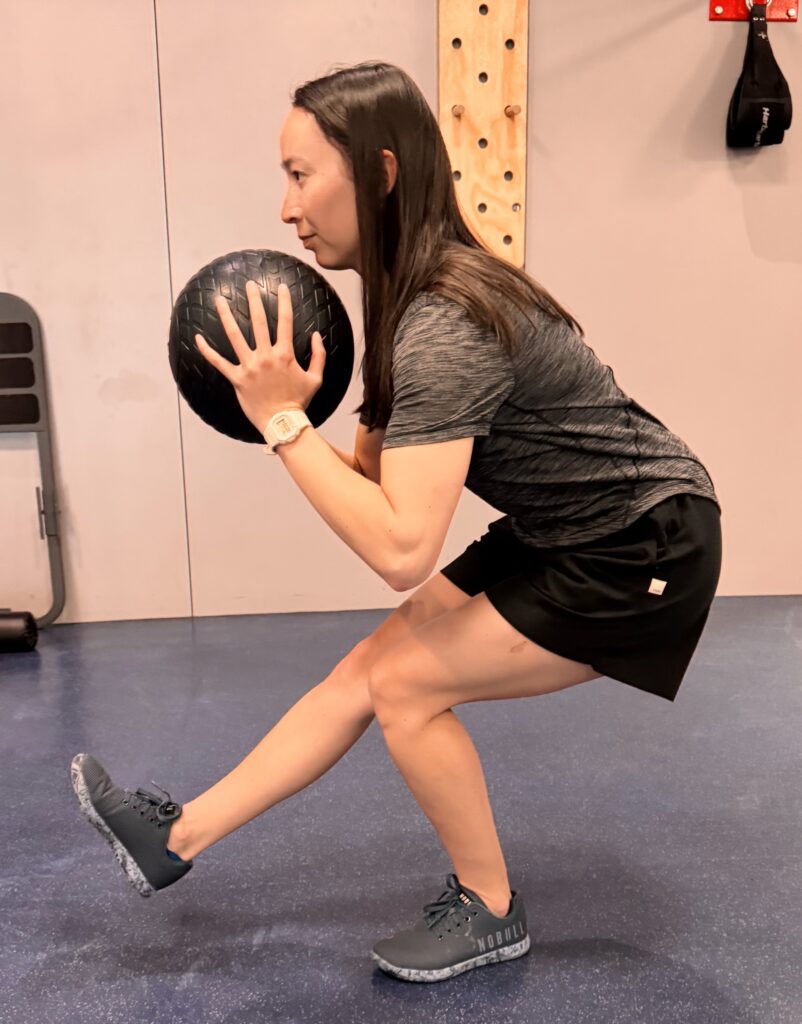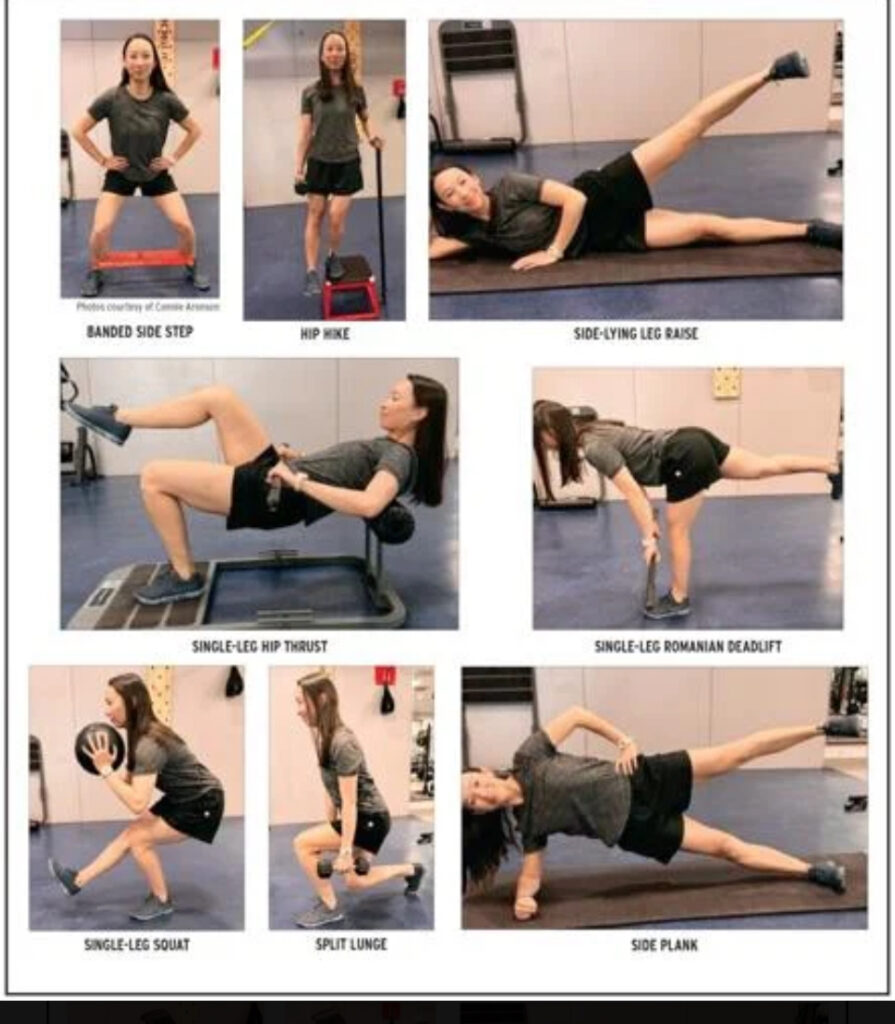

For anatomy lovers:
The gluteal muscles are large, powerful muscles that cross the hip joint and play a critical role in nearly all lower-body movement. The gluteus maximus is the largest of these muscles and is responsible for extending and laterally rotating the hip joint, enabling movements like standing up, climbing and running.
The gluteus medius and gluteus minimus sit on the side and back of the hips and function primarily as hip abductors. These muscles are essential for stabilizing the pelvis, particularly during single-leg activities such as walking or running.
Gluteal strength is crucial for efficient movement, especially in the gait cycle. Strong glutes help carry the weight of the leg during swing phases and contribute to balance and propulsion. Increasing gluteal strength can lead to:
- Improved running speed
- Reduced knee pain
- Decreased risk of hip osteoarthritis
- Enhanced pelvic stability during movement
Weak gluteal muscles can lead to improper alignment, such as the knee collapsing inward (valgus), which places undue stress on the joint and increases injury risk.
A practical example of glute strength in action is something as routine as getting out of a car. In this movement, the gluteus maximus works to stabilize the knee and extend the hips, helping you rise from a seated position smoothly and safely.
When selecting the most effective exercises to target the gluteal muscles, it’s important to choose movements that provide sufficient stimulus and mechanical tension. These are key factors in promoting muscle strength and hypertrophy.
A study published in Medicine & Science in Sports & Exercise evaluated eight commonly used hip-focused exercises aimed at strengthening the glutes, whether for injury prevention or rehabilitation purposes. The researchers examined several variables related to muscle function, including:
- Muscle force
- Fiber length
- Fiber velocity
- Muscle activation
And the winners are :
By analyzing these elements, the study was able to rank the exercises based on how effectively they engaged the gluteal muscles. This type of research helps inform smarter exercise selection—ensuring you’re not just working hard, but working effectively.
The exercises were single-leg squat, split squat, single-leg Romanian deadlift, single-leg hip thrust, banded side step, hip hike, side plank and side-lying leg raise. A 12-repetition intensity was selected as it is based on a typical training range used in rehab and injury prevention programs.
Research shows that the split squat, single-leg Romanian deadlift (RDL) and single-leg hip thrust produce the highest gluteal muscle forces, making them top-tier choices for overall glute development.
When it comes to targeting the gluteus medius and minimus—key muscles for hip stability—the side plank and single-leg RDL come out on top.
As expected, weighted variations of these exercises are significantly more effective than bodyweight alone.
Takeaway: Now you’ve got the tools to train smarter—hit those glutes with purpose and specificity!

As seen in The Idaho Mountain Express May 4, 2025 https://www.mtexpress.com/wood_river_journal/features/fitness-guru-target-your-glutes-like-a-pro/article_367a235a-4a2b-4956-8847-2e7c0448ea7f.html
